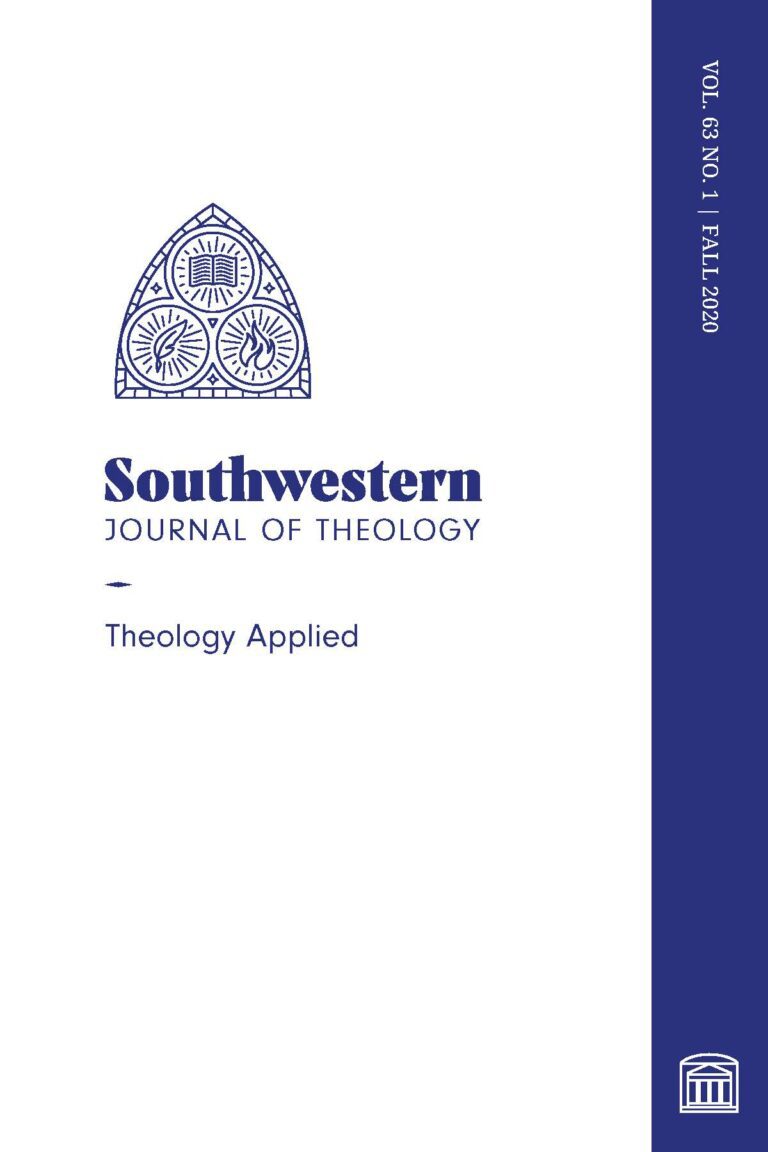
Theology Applied
Southwestern Journal of Theology
Volume 63, No. 1 – Fall 2020
Editor: David S. Dockery
By Garrett Green. Grand Rapids: Baker, 2020, 288pp., $63.00
Building upon a career of reigniting interest in the role of imagination in theology, Garrett Green, professor emeritus at Connecticut College, explores in his most recent work the implications for theology of a Christian imagination paradigmatically revealed in Scripture. Imagination in Green’s thinking “functions throughout human experience, enabling us to envision the whole of things, to focus our minds to perceive how things are ordered and organized” (p. 10). Understanding the imaginative potency of Scripture combats a modern scientific approach to theology characteristic of theological liberalism with a normative Christian imagination, “the employment of the human imagination in ways that remain faithful to the biblical paradigm” (p. 22).
Green opens by presenting guidelines for discerning such a normative use of imagination and then develops a hermeneutic that he applies in a series of essays on various theological issues. His guidelines include the following:
- The Bible embodies the concrete paradigm on which all genuine Christian theology is based, enabling the faithful to rightly imagine God (p. 12).
- Right imagination of God is a movement not only of the head—our mind or intellect—but also of the heart, our feelings and affective responses (p. 14).
- The theological use of imagination must always remain open to the Mystery of God, resisting every temptation to rationalize, demystify, or control the divine (p. 15).
- In accordance with its biblical paradigm, theological imagination always remains open to novelty, eschewing every attempt at metanarrative or systematic closure (p. 16).
- Because theological imagination is dependent on the Holy Spirit, it is an enterprise of faith, appearing uncertain and circular from a worldly perspective, depending on the certainty of God’s revelation for its claim to truth (p. 19).
- Theological imagination belongs to the present age, the regnum gratiae, the era of our earthly pilgrimage, when we “see through a glass, darkly.” We will no longer need to imagine God in the world to come, when we shall see him “face to face” (p. 21).
These rules provide a hermeneutical framework that resists “de-mythologizing” Scripture, instead insisting that in Scripture “the form is the content: that is, the meaning of a religious world is precisely its shape, the concrete web of ideas, social interactions, symbolic forms, and so on, that give it the peculiar qualities that make it what it is and not something else” (p. 30). Form and content, Green argues, is a false distinction employed by both those rejecting the historicity of Scripture and often those defending it. A better way would be to see the unity of Scripture as an expression of imagination that then shapes our imagination. On this basis, Green suggests, theology that recognizes “the fundamentally imaginative nature of religious belief and practice” (p. 58) is no threat to Christianity; rather, “the believer can affirm the truth of revelation, without shame or embarrassment, in spite of its imaginative character” (p. 61), and in fact “the church is a school of the imagination, the place where we learn to think, feel, see, and hear as followers of the crucified and risen Messiah” (p. 72). This, he suggests, was the project of his former Yale professor Hans Frei, who describes Scripture as a “realistic story” in which its truth is inherently embodied in the literary narrative (p. 84). A biblically-formed imagination, then, provides a lens that “allows us to make sense of what we perceive” in the world (p. 100), considers man-made art to be a doxological tool that “points aesthetically toward the God of the Bible” (p. 120), suggests that the metaphors Scripture uses “say what cannot be said in any other way” (p. 129), and helps Christians “apprehend another world” (p. 193) that forms an eschatological hope in the midst of a secular, pluralistic age.
Green’s argument provides a refreshing corrective for the frequently anti-aesthetic, overly-rationalistic emphasis of much of modern evangelical theologians. He is right: the Spirit-inspired word is a work of literature employing a vast variety of aesthetic devices to communicate what could not be otherwise. Since God is a spirit and does not have a body like man, since he is infinite, eternal, and total other than us, God chose to use particular aesthetic expressions that renew our minds (Rom. 12:2) and thus form our imagination of who God is.
Yet Green sometimes swings the pendulum too far into a neo-orthodox ambivalence regarding the historical veracity of biblical narratives (p. 86). He criticizes Barth’s distinction between Geschichte and Historie (p. 31), while at the same time asserting his own distinction between “our scientific understanding of the origin of species” and “our theological apprehension of the origin of the world. Relativism no longer threatens to undo our grasp on reality because we no longer imagine that we need universal principles to link all human knowledge systematically or to ground it in incorrigible truth” (p. 38). In my opinion, recent work by evangelical authors like Kevin Vanhoozer, The Drama of Doctrine among others, carves out a more conservative position that does not fall into the traps of higher critical cultural-linguistic philosophy on the one hand or what Vanhoozer calls the “dedramatized propositionalism” that characterizes many forms of the historical-grammatical philosophy.
Nevertheless, Green’s articulation of a Scripture-formed imagination, particularly in the early chapters, contains many helpful principles that would aid a conservative evangelical in recovering from Scripture a “normative way to imagine God” (p. 14).





